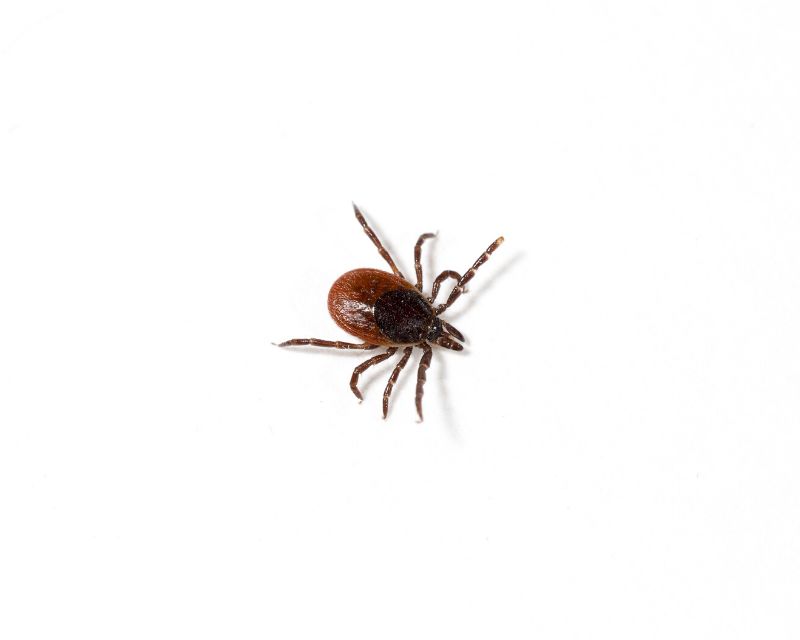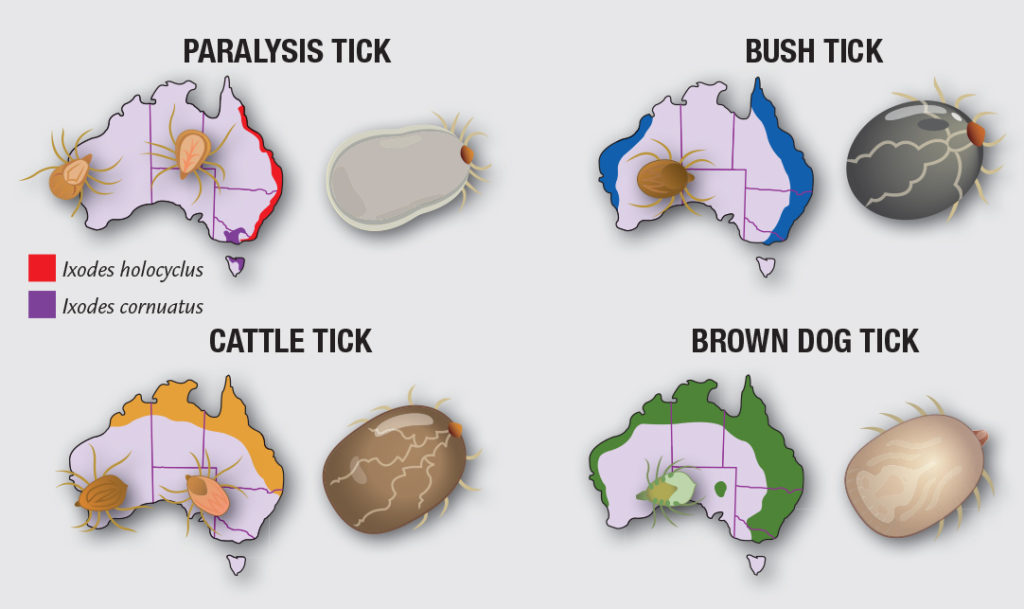tick life cycle australia
Lets review the life-cycle of a tick. Males have a hard covering scutum over their backs.

Ticks And Prevention Lyme Disease Association Of Australia
The Paralysis Tick needs to feed on blood to develop through its lifecycle from the larvae stage to a nymph and to an adult.

. The life cycle takes approximately 1 year to complete minimum 135-437 days Eggs. The egg larvae around 1mm and light brown in colour when not full of blood nymph around 2mm and pale brown and the adults 45mm in length without blood. Life cycle of cattle ticks There are four stages in the life cycle of the cattle tick.
In females the scutum covers only a small portion of the ticks back allowing the rest of the body. Australian Paralysis Ticks occur in areas of high humidity especially in gullies wet sclerophyll forests rainforest edges and regrowth. The life cycle of Ixodes holocyclus consists of four stages.
Ticks have four stages of their life cycleeggs larvae nymphs and adult ticksand every stage except the eggs feeds on blood. Normally this would be a bandicoot or possum which become immune to the poison. By the 19 th day after attachment as larvae the females start to mature once they reach 4-5mm long they engorge overnight and drop to the ground early the next morning.
This tick also feeds on many other mammals and birds. Larvae have 6 legs while nymphs and adults have 8 like the rest of their arachnid relatives. Download scientific diagram Life cycle of Borrelia in tick Ixodes spp.
Tick Control Ixodes scapularis the black-legged deer tick which is the primary vector for Lyme disease has a four-stage life cycle and a lifespan of about two years. They shed their skin moult to become nymphs which have eight legs. Ticks hatch as six-legged larvae after an incubation period of 40 to 60 days.
This means that tick larvae and nymphs as well as full-grown adult ticks need to bite a host such as a human or a wild animal and suck its blood in order to survive. Its important to be familiar with this life cycle to get rid of ticks from your lawn and. Flattened from top to bottom overall oval seed-shaped body.
Thus it is a three-host tick. But it is time for a new and improved book on the ticks of Australia. A tick life cycle generally involves four stages.
Life Cycle of Ticks. Home Tick Advice The Paralysis Tick Life Cycle. The Australian Paralysis Tick Ixodes holocyclus is found in Eastern Australia and is a parasite to native mammals livestock pets and even people.
Completing the Cycle Depending on the species of tick the entire life cycle can take from two months to years to complete. The eggs hatch and six-legged larvae emerge from the eggs. Tick-borne diseases occurring in Australia are Australian Tick Typhus or Spotted Fever along the coastal strip of eastern Australia from North Queensland to Victoria and Flinders Island Spotted Fever in Victoria Tasmania and Flinders Island.
There are 4 distinct stages of the life cycle of the Australian Paralysis Tick egg larva nymph adult. During this time they go through four life stages. Human Tick-Borne Diseases in Australia There are 17 human-biting ticks known in Australia.
Female cattle ticks feed on blood for 7 to 12 days. Region of eastern Australia almost all tick bites on people are from the Australian Paralysis Tick Ixodes holocyclus. In early spring ticks begin to lay their eggs.
Egg larva nymph adult. Data obtained suggest that it is more common and potentially life. 1 The Egg Stage 1 After the adult female tick has acquired a proper blood meal she mates with the adult male tick leaves the host and searches for a suitable spot to lay her eggs.
2 The Larvae Stage 2. Egg larva nymph and adult. Ixodes holocyclus requires three hosts to complete its life cycle.
There are some species of ticks that only require one host or sometimes two to complete their life cycle. It can take up to three years for a tick to complete its life cycle but many die in process seeking a host. When they do attach themselves to a host they feed for about a week shed their skins moult and turn into nymphs.
They may be small but theyre prolific. The life-cycle stages of Deer Ticks goes from Egg Larva Nymph Adult and at each stage there are ways to help better protect yourself from tick-borne illnesses. The cattle tick life cycle is an average of 21 days.
Nymphs moult to become adults which are male or female. The First Stage egg The adult female tick first fulfills a proper blood meal then the process of mating occurs between an adult male and adult female tick. Female adult ticks lay up to 3000 eggs in litter of which x.
The present book has identification guides and accounts of the biology and diseases associated with the 16 species of ticks that may feed on domestic animals and humans in Australia. Ticks go through four life stages. The female paralysis tick lays up to 3000 eggs.
Roberts 1970 is a land-mark in Australian tick biology. Stages in the Life Cycle of Ticks. Hard ticks will typically lay eggs on the ground in protected areas during the spring.
Tick bite anaphylaxis has rarely been reported. Larvaehatch from eggs and have six legs. After hatching from the eggs ticks must eat blood at.
The life cycle of a tick is completed after four stages namely egg larva nymph and adult it requires more than a year to complete a full life cycle. There are four stages in the life cycle of a tick. Tick borne diseases tick paralysis and severe allergic reactions can pose serious health threat.
The lifecycle of Ixodes scapularis ticks generally lasts two years. The book Australian Ticks by FHS. Larvae or seed ticks hatch from eggs and swarm up grass blades where they may survive for up to 6 months before finding a suitable host.
Egg larva nymph and adult. After hatching the larvae climb onto nearby vegetation and look for their first hosts. Hard ticks have three life cycle stages.
After the eggs hatch the ticks must have a blood meal at every stage to survive. It may follow the bite of any of the different tick life cycle forms is related to the release of salivary juices and may range from mild itch to severe wheeze or shock. Blacklegged ticks can feed from mammals birds reptiles and amphibians.
Ticks are not able to lay eggs directly on a host they must first detach. Ornate kangaroo tick Amblyomma triguttatum All female ticks need to take a blood meal before producing eggs.
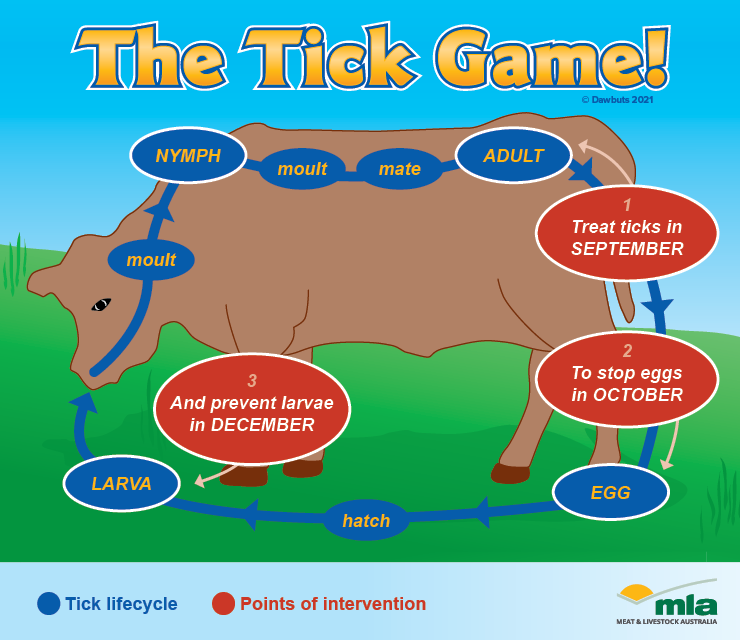
Playing To Win Against Cattle Ticks Meat Livestock Australia

1 Typical Three Host Life Cycle Of A Female Ixodid Hard Tick Download Scientific Diagram
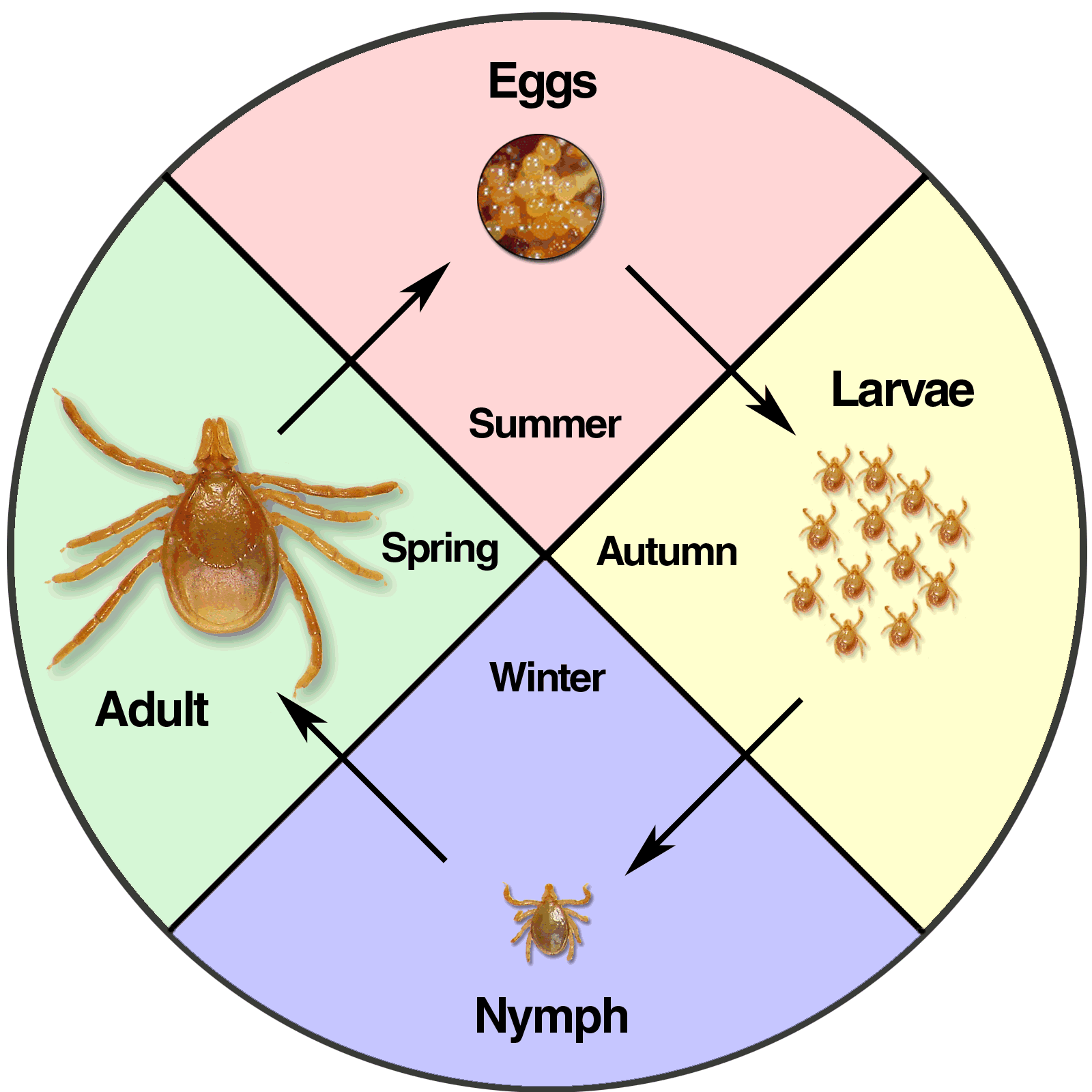
An Overview Of Tick Paralysis Symptoms Treatment And Prevention

Hang On A Tick Are Ticks Really The Vectors For Australian Trypanosomes Trends In Parasitology

Hard Tick Life Cycle U S Tennessee Valley Authority Drawing Download Scientific Diagram

The Lifecycle Of The Three Host Tick Ixodes Holocyclus 5 Download Scientific Diagram

Rhipicephalus Australis Australia Cattle Tick Male Dorsal And Ventral Download Scientific Diagram

Tick Paralysis In Cats Clinical Signs Treatment Prognosis

Mittagong Veterinary Hospital Great Tails And What S New Blog
Dogs And Ticks Living In Australia Moving To Australia Pomsinoz Forum
Keep Your Pets Safe With Tick Safe Tick Safe And The Mozzie Team

Pdf Ticks Of Australia The Species That Infest Domestic Animals And Humans
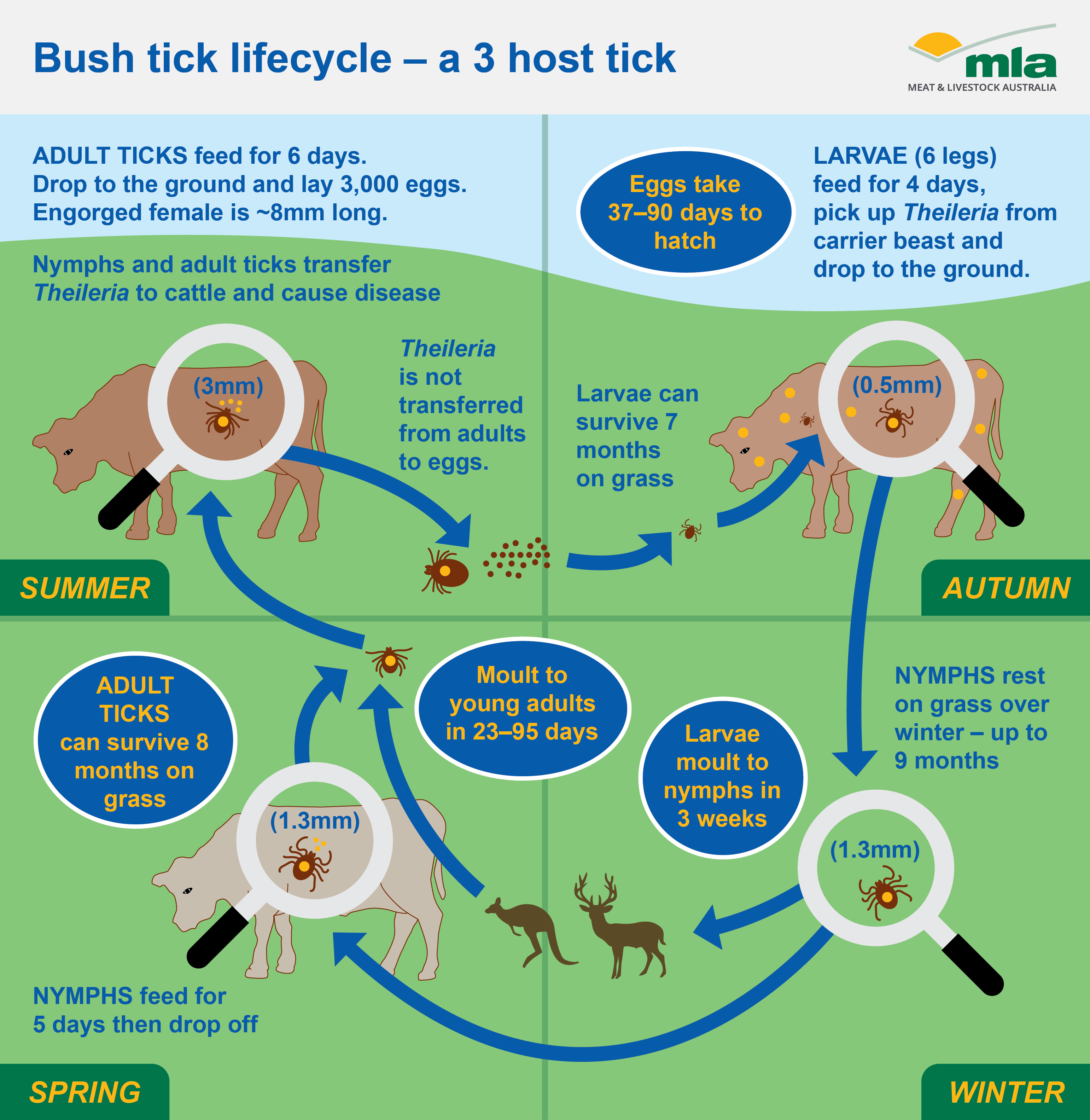
Controlling Bush Tick And Theileriosis Meat Livestock Australia

Life Cycle Of A Multi Host Argasid Tick Example Is Ornithodoros Download Scientific Diagram
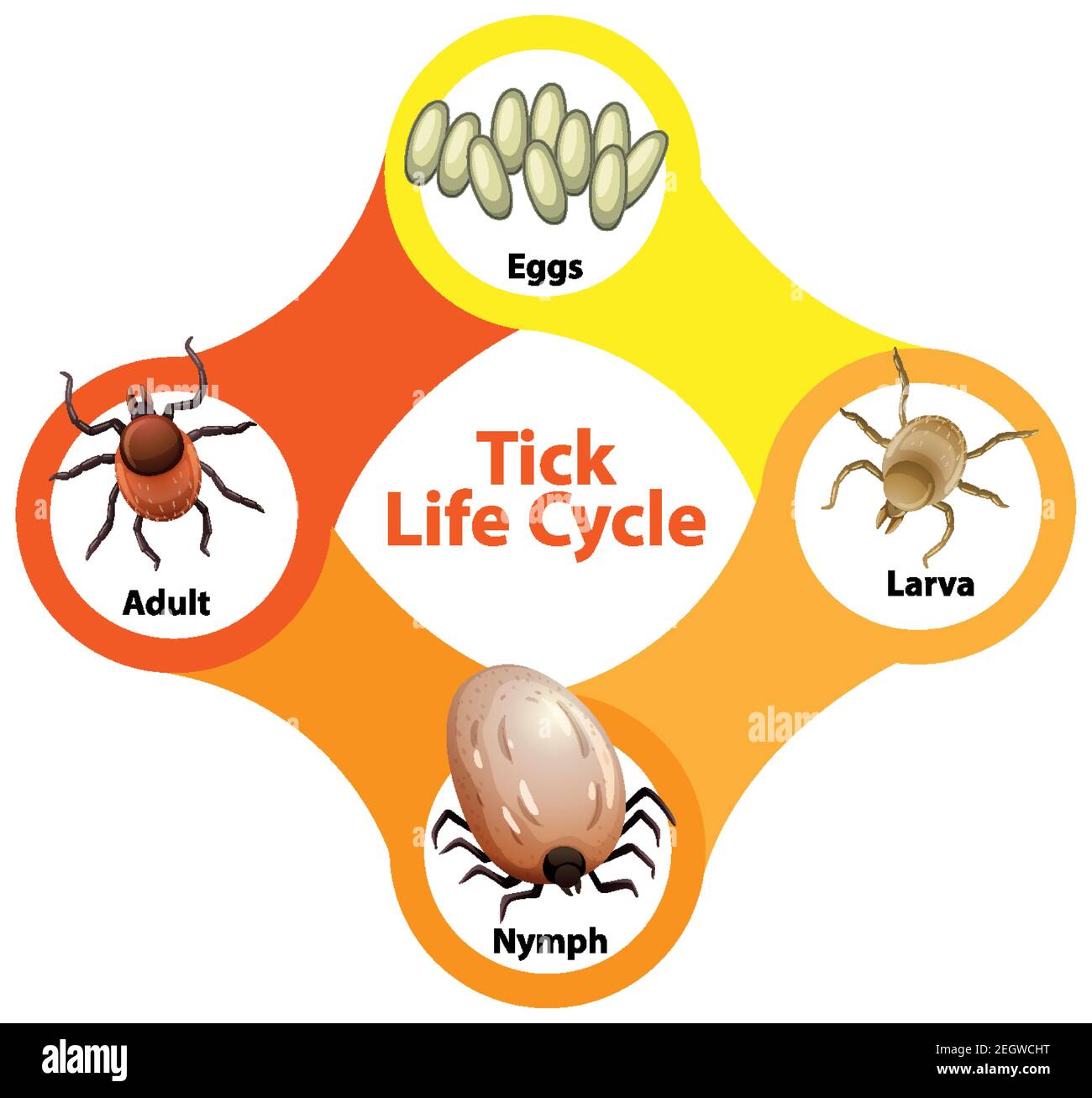
Diagram Showing Life Cycle Of Tick Stock Vector Image Art Alamy
Nymph Ticks The Top 7 Facts You Need To Know Tick Safe And The Mozzie Team
